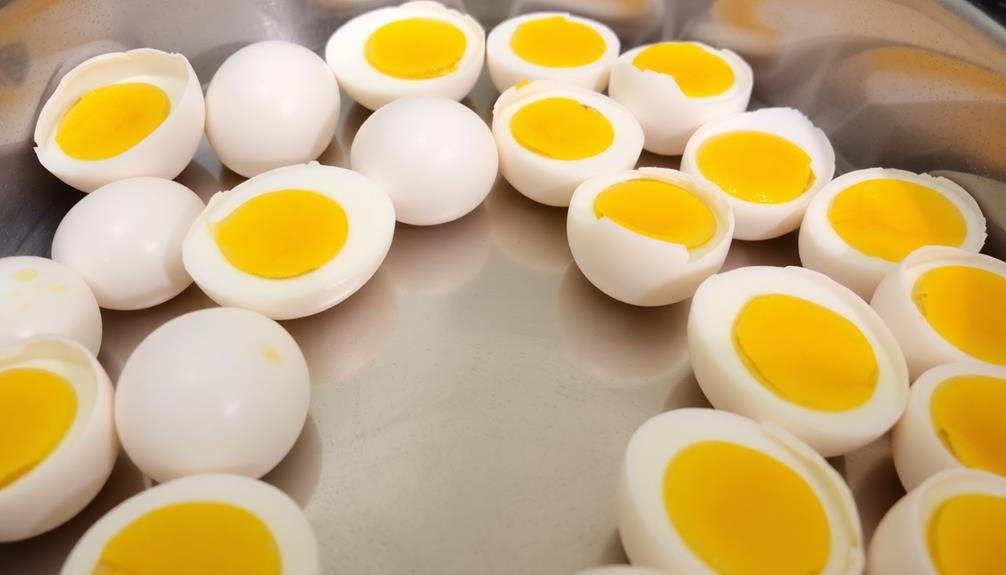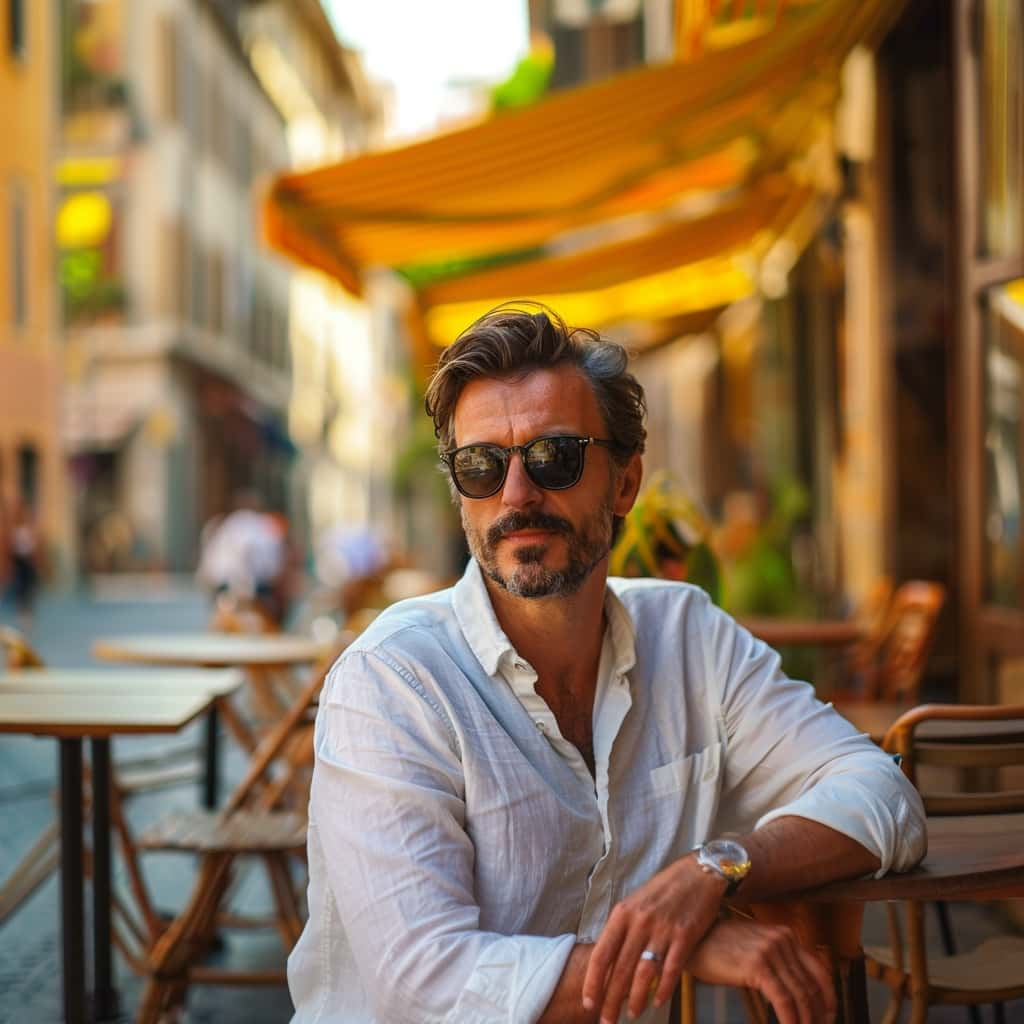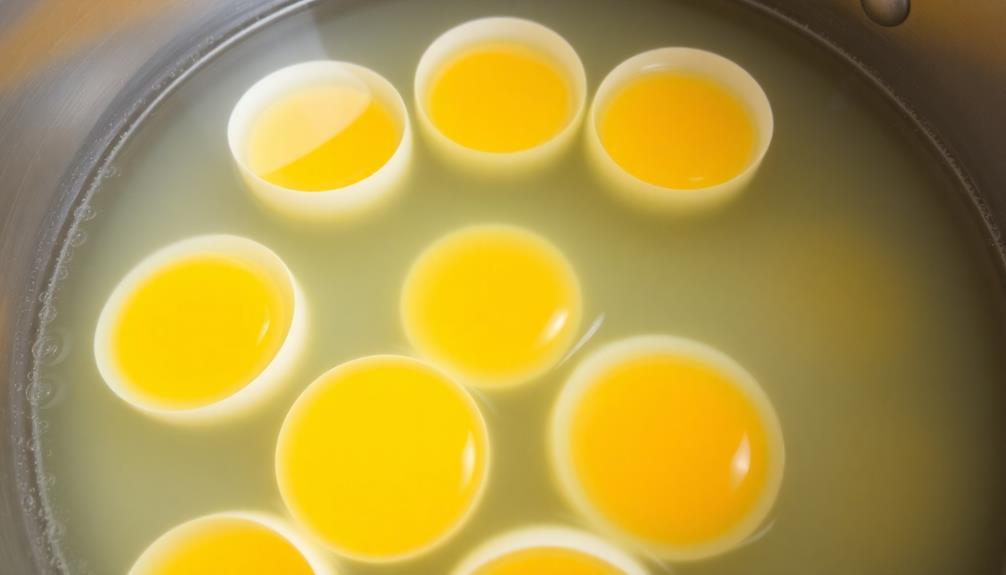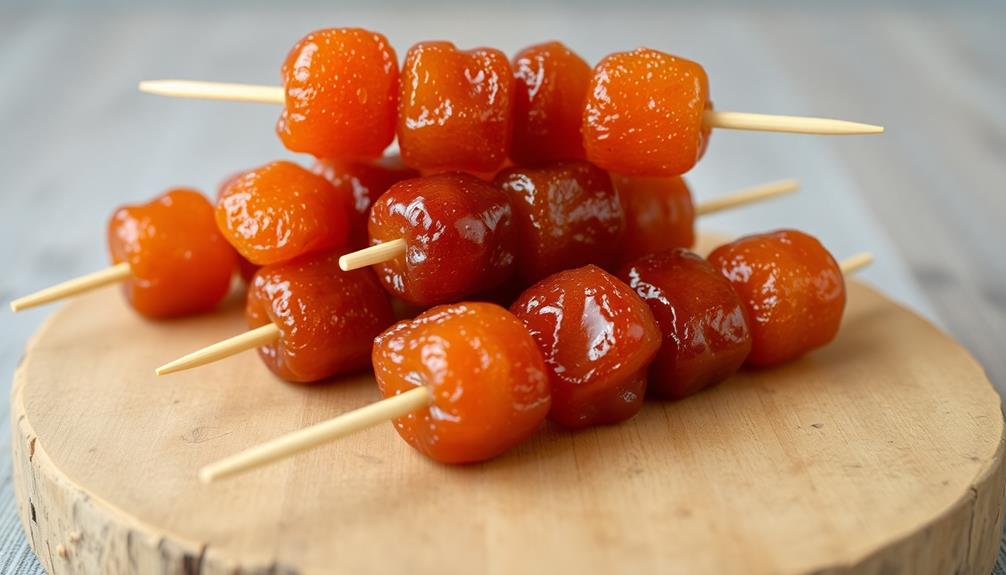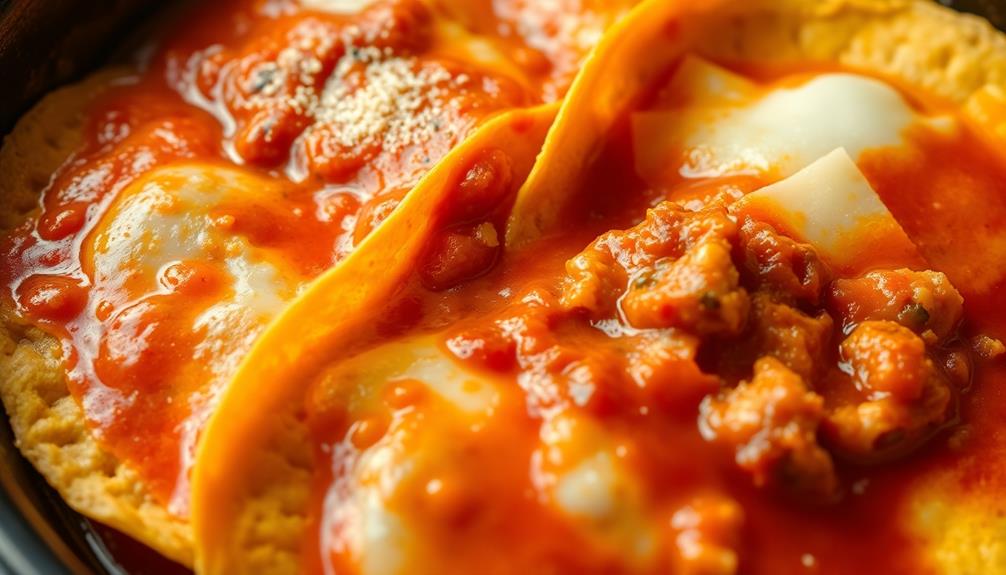Pancakes hold a rich history, tracing back to ancient Greece and Rome before evolving into diverse regional styles. To craft perfect pancakes from scratch, you'll need a base of all-purpose flour, sugar, baking powder, salt, and milk. Incorporate additional ingredients like eggs and butter for optimal texture and moisture. Carefully combine the dry and wet ingredients, then cook on medium heat, pouring the batter evenly and flipping at the right moment. Resting the batter, monitoring temperature, and experimenting with mix-ins can further enhance your pancake-making prowess. Once you've mastered the basics, be sure to explore the delectable world of toppings and serving suggestions.
Key Takeaways
- Combine dry ingredients (flour, sugar, baking powder, salt) thoroughly to ensure even distribution before adding wet ingredients (milk, eggs, melted butter).
- Allow the batter to rest for 5-10 minutes to relax the gluten and activate the leavening, resulting in fluffier pancakes.
- Use a non-stick skillet or griddle and cook the pancakes over medium heat, flipping them when bubbles form on the surface.
- Experiment with mix-ins like fruits or chocolate chips for added flavor and texture variation.
- Serve pancakes warm with a variety of toppings, such as maple syrup, fresh fruit, or whipped cream, for a customized dining experience.
History
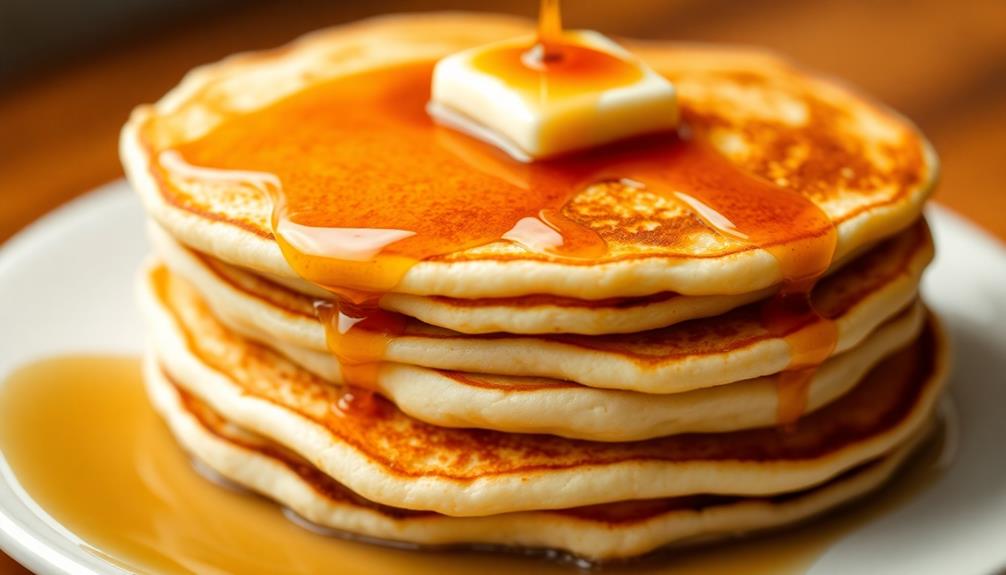
Although the origins of pancakes can be traced back to ancient civilizations, the modern pancake has a rich and varied history. Ancient Greeks and Romans made early versions of pancakes using wheat flour, eggs, and milk.
In the Middle Ages, pancakes were a popular Lenten food, as they used readily available ingredients like eggs, milk, and flour.
The American pancake as we know it today emerged in the 19th century, influenced by European recipes and Native American traditions. Pioneers and settlers across the young nation developed their own regional styles, from fluffy buttermilk pancakes in the South to thin, delicate Swedish pancakes in the Midwest.
Today, pancakes remain a beloved breakfast staple around the world, with endless variations and regional specialties. Whether you enjoy them topped with maple syrup, fresh fruit, or savory fillings, the humble pancake has come a long way from its ancient roots.
Recipe
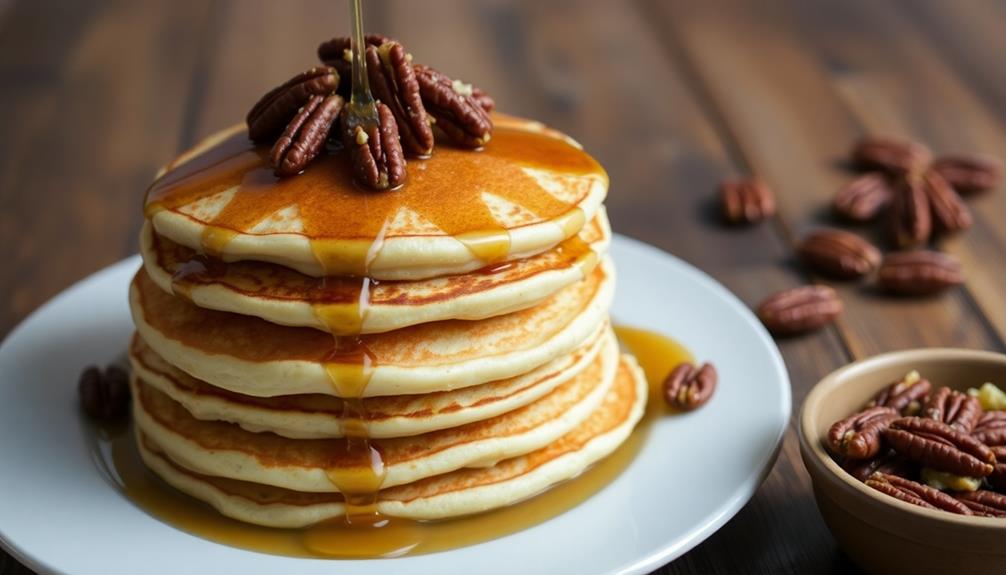
Pancakes are a beloved breakfast staple, revered for their fluffy texture and versatile flavor. The key to achieving the perfect pancake lies in the right balance of ingredients and the proper cooking technique.
To create these delectable discs of deliciousness, you'll need to gather a few simple ingredients and follow a straightforward set of instructions. With a little care and attention, you'll be rewarded with a stack of pancakes that will delight your taste buds and impress your friends and family.
- All-purpose flour
- Granulated sugar
- Baking powder
- Salt
- Milk
- Eggs
- Melted butter or oil
Begin by combining the dry ingredients in a large bowl, whisking together the flour, sugar, baking powder, and salt. In a separate bowl, whisk together the milk and eggs. Gently fold the wet ingredients into the dry ingredients, being careful not to overmix. Finally, stir in the melted butter or oil.
Preheat a lightly oiled griddle or nonstick pan over medium heat. Scoop the batter onto the hot surface, forming pancakes of your desired size. Cook until the edges begin to set and tiny bubbles appear on the surface, then flip and cook until golden brown on the other side. Serve warm with your favorite toppings, such as maple syrup, fresh fruit, or whipped cream.
To ensure your pancakes turn out perfect every time, remember to let the batter rest for a few minutes before cooking, as this allows the gluten to relax and the leavening agents to activate.
Additionally, be mindful of the cooking temperature, as too high heat can result in a dry, unevenly cooked pancake.
Cooking Steps
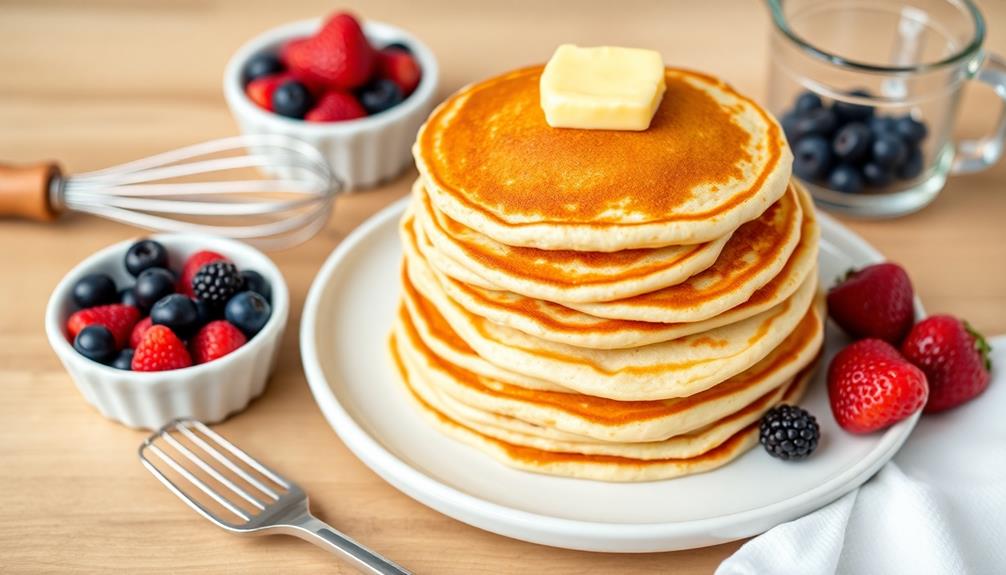
First, you'll want to thoroughly combine the dry ingredients.
Next, gently mix in the wet ingredients until the batter is smooth.
Then, heat your pan over medium and pour the batter on evenly to cook until golden brown.
Step 1. Combine Dry Ingredients Thoroughly
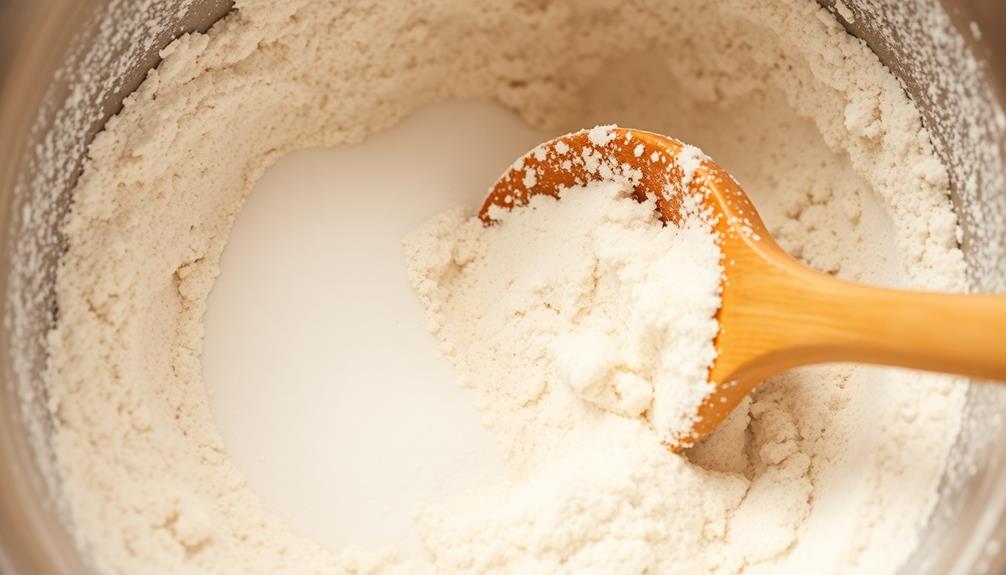
Next, thoroughly combine the dry ingredients. In a large bowl, whisk together the all-purpose flour, granulated sugar, baking powder, and salt until well incorporated.
This step is crucial for ensuring the dry ingredients are evenly distributed throughout the batter, which will result in a light and fluffy pancake.
When combining the dry ingredients, be sure to break up any clumps of flour or sugar using the back of the whisk. This will help create a smooth, lump-free batter.
Additionally, take the time to measure each ingredient precisely, as the right balance of dry components is essential for perfect pancakes.
Once the dry ingredients are thoroughly combined, you're ready to move on to the next step: mixing the wet ingredients.
Step 2. Add Wet Ingredients
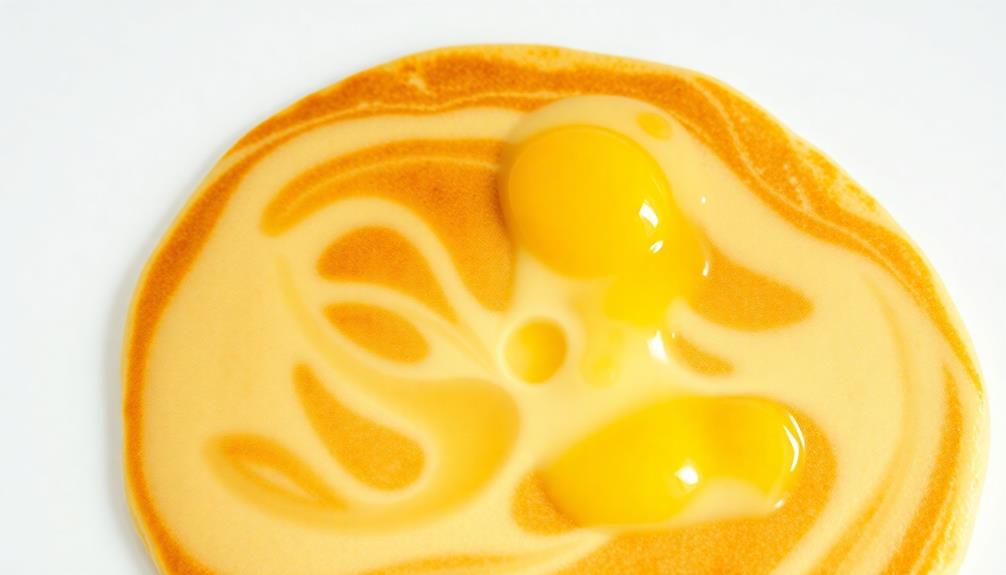
Now that the dry ingredients are thoroughly combined, it's time to add the wet components.
In a separate bowl, whisk together the milk, egg, and melted butter until fully incorporated. You want the wet mixture to be smooth and free of any lumps.
Next, pour the wet ingredients into the bowl of dry ingredients.
Using a gentle hand and a whisk or rubber spatula, fold the wet and dry ingredients together until just combined. Be careful not to overmix, as this can result in tough, rubbery pancakes.
The batter should have a slightly lumpy, pourable consistency.
Step 3. Heat the Pan
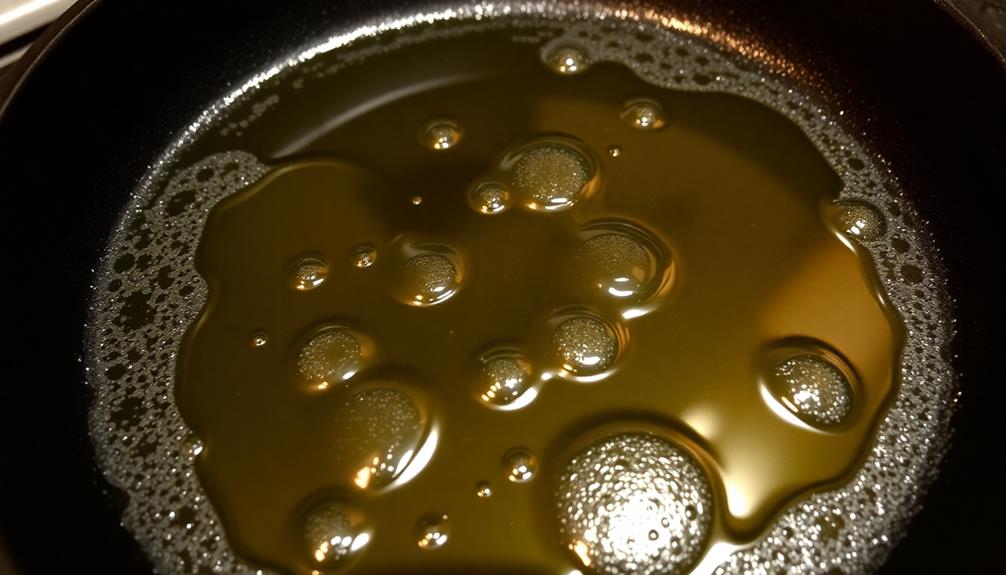
Heat your pan over medium heat. This is a critical step in achieving the perfect golden-brown exterior and fluffy interior for your pancakes. The even, moderate heat helps the batter cook through while developing that lovely, caramelized surface.
You'll want to use a nonstick pan or griddle, as this will make it easier to flip the pancakes without them sticking. Give the pan a few minutes to preheat – you'll know it's ready when a drop of water sizzles and evaporates quickly on the surface.
Once preheated, lightly grease the pan with a small amount of butter or oil. This helps prevent sticking and gives the pancakes a nice, crisp edge. Be careful not to use too much, as this can lead to oily, greasy pancakes.
Now you're ready to pour in the batter! Scoop it onto the hot pan, using about 1/4 cup per pancake. Cook for 2-3 minutes per side, or until the edges are set and the centers are no longer wet.
Step 4. Pour Batter Evenly Onto Pan

With the pan preheated and lightly greased, you're ready to start pouring the batter.
Begin by giving the batter a gentle stir to ensure it's well-combined. Using a ladle or a measuring cup, slowly pour the batter onto the hot pan, working in a circular motion to create uniform pancakes.
Be mindful of the size you'd like your pancakes to be – typically around 4-5 inches in diameter is a good target. Pour just enough batter to create the desired size, as overfilling the pan can lead to uneven cooking or difficult flipping.
As the batter hits the pan, you'll notice it immediately begins to set and bubble around the edges. This is your cue to let the pancake cook undisturbed for about 2-3 minutes, or until the edges appear dry and the center is set.
Once the pancake is ready, gently slide a spatula underneath and flip it over to cook the other side for an additional 1-2 minutes, or until golden brown.
Step 5. Cook Until Golden Brown

Once the pancake is flipped, you'll want to cook it until it's a beautiful golden brown color. This stage is crucial, as it not only enhances the pancake's visual appeal but also develops its delectable flavor.
Aim to cook the pancake for 2-3 minutes on the second side, keeping a close eye to prevent burning. The key is to maintain a consistent, medium-low heat throughout the cooking process. If the pan gets too hot, the outside may brown before the inside is fully cooked.
As the pancake cooks, you'll notice the edges starting to set and the center becoming more solid. When the color reaches a rich, golden hue, it's time to remove the pancake from the heat.
Be gentle when transferring it to a plate, as the delicate texture can easily be disrupted.
Repeat this process for the remaining batter, adjusting the heat as needed to achieve the perfect golden brown pancakes every time.
Final Thoughts
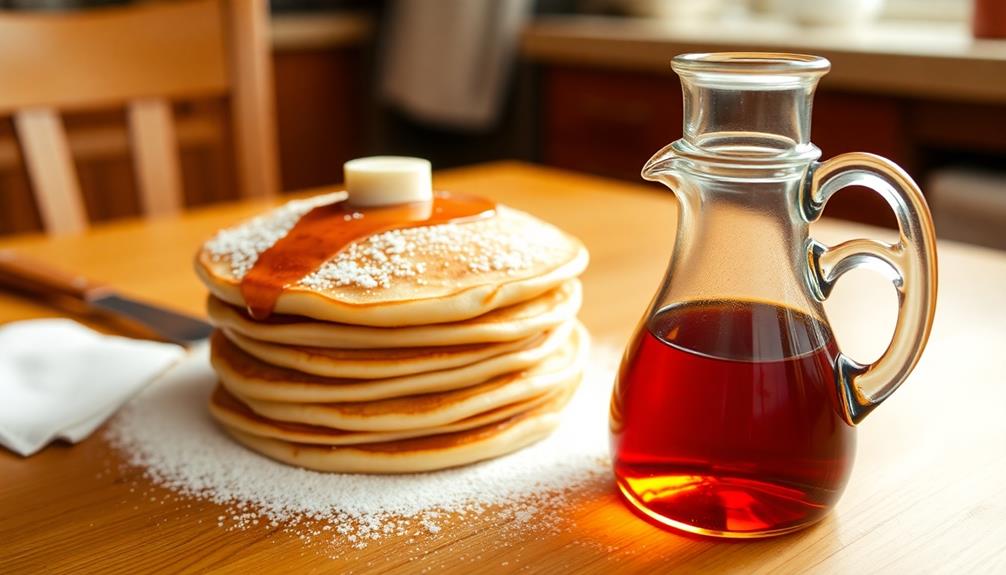
As you put the finishing touches on your perfectly cooked pancakes, take a moment to reflect on the journey that led you here. From selecting the right ingredients to mastering the technique, you've overcome each challenge with determination and a keen eye for detail. These fluffy, golden-brown beauties are a testament to your culinary prowess. With each bite, you’re reminded that persistence and patience truly pay off. You’ve gone from wondering *how to make fluffy pancakes* to creating a breakfast masterpiece that would impress any critic. As you savor the fruits of your labor, you can’t help but feel a sense of pride in your newfound skill. You’ve discovered that the secret isn’t just in the recipe but in the precision and love you pour into every step. Along the way, you’ve picked up invaluable fluffy pancake cooking tips, like gently folding the batter to keep it airy and letting it rest to achieve that perfect rise. Each plate you serve now carries the warmth of your effort and the joy of a skill mastered, ready to delight family and friends alike.
Remember, perfecting pancakes is an art form that takes time and practice. Don't be discouraged if your first few attempts don't quite measure up to your expectations. Each experience is an opportunity to learn and improve.
Experiment with different mix-ins, toppings, and cooking methods to find the perfect combination that suits your personal taste.
Savor this moment of accomplishment. With each delicious bite, you'll be reminded of the satisfaction that comes from creating something truly special from scratch. Enjoy your perfect pancakes, and let this triumph spur you on to explore new culinary horizons.
Frequently Asked Questions
What Is the Best Flour to Use for Light and Fluffy Pancakes?
For light and fluffy pancakes, you'll want to use all-purpose flour. It's got the perfect balance of protein and starch to create a tender, airy texture. Avoid using self-rising or whole-wheat flour, as they won't give you the same results.
Can I Make the Batter Ahead of Time and Refrigerate It?
You can make the batter ahead of time and refrigerate it, but it's not recommended. The baking powder will start to lose its leavening power, resulting in less fluffy pancakes. It's best to make the batter just before cooking for the best texture.
How Can I Prevent My Pancakes From Turning Out Flat or Dense?
To prevent your pancakes from turning out flat or dense, be sure not to overmix the batter, which can develop too much gluten and make the pancakes tough. Also, use a hot pan or griddle for optimal loft and fluffiness.
Is It Necessary to Let the Batter Rest Before Cooking?
Letting the batter rest isn't absolutely necessary, but it can help improve the texture of your pancakes. The resting period allows the gluten to relax, resulting in a lighter, fluffier pancake. Give it a try and see if it makes a difference.
Can I Substitute Milk With Other Dairy or Non-Dairy Alternatives?
You can substitute milk with other dairy or non-dairy alternatives in your recipe. Try using almond milk, soy milk, or even buttermilk for a tangier flavor. Just be sure to adjust the consistency of the batter as needed.

